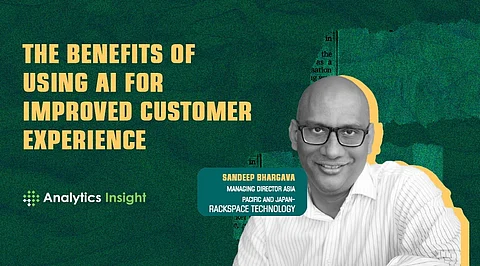

In the modern world, every customer belongs to a unique marketing segment. Advances in digital transformation and data modernisation enable retailers to target consumers down to the "segments of one" level and, as a result, achieve greater success.
Traditionally, retailers have adopted mass demographic-based segmentation. But retailers embracing the future are using data analytics for micro-segmentation to deliver personalised offers and targeted communications.
According to McKinsey, companies that excel at customer intimacy generate 40 per cent more revenue, with real-time personalisation delivering a return on investment (ROI) of five to eight times marketing spend and increasing sales by 10%. Those are big numbers for any retailer, but achieving them is easier said than done, especially with inaccurate data locked in multiple silos.
As artificial intelligence-based analytics continues to evolve, businesses can leverage significant amounts of data to create customer microsegments easily, which can harness specific details to segment at an even deeper level to deliver unparalleled personalisation. Yet, despite all of today's modernisation capabilities, many businesses are still struggling to extract value from their data.
Rackspace Technology® AI/ML Annual Research Report 2022 found that only 45 per cent of Singapore IT leaders understand how Artificial Intelligence (AI) and machine learning boost marketing effectiveness. However, many leaders still recognise the value of AI and machine learning for creating a more personalised customer experience — with 77 percent of respondents agreeing that it has helped them with customer relationship management.
An example of local organisations benefitting from AI personalisation includes Southeast Asia's leading e-commerce marketplace Shopee. Leveraging data and AI, the platform identifies patterns and insights from browsing and purchase data while enabling brands to deliver distinct shopping experiences.
The first two steps in boosting the power of your marketing programs are understanding how to extract value from your data and how to use AI to overcome the challenges presented by micro-segmentation.
Effective micro-segmentation requires accurate and complete data. One problem in achieving this goal is that retailers often have several brands, each holding siloed and disparate data.
Micro-segmentation depends on a deep understanding of your customers. But you cannot get that with gaps in your data. Any flaws will inhibit your goal of delivering micro-segmented, personalised experiences to your customers.
The key to overcoming this problem is to consolidate all internal and external sources into one customer platform. Then you need to make the data easily accessible to your marketers in a simple-to-digest format.
There are clear challenges for retailers in configuring their data for personalisation. However, for most companies the solution is within reach and simply requires modernising their data storage. How can AI help you micro-segment your target audiences? By giving you the ability to achieve these goals:
Personalisation is the future of retail. But to get it right retailers need fast and easy access to accurate data. Data transformation and AI are leading the way. Thanks to data modernisation and the ability to access insights from large amounts of data quickly, marketers can provide highly personalised messages to consumers that potentially deliver a significant increase in sales.
Data-driven personalisation helps organisations optimise resources, like time and money, and instead divert them towards expanding intelligent applications and services. Cloud computing is an asset to decision-makers because it empowers organisations to harness data granularity, leaving out the ifs and buts to drive businesses down the path toward the front- and back-end efficiency.
Sandeep Bhargava, Managing Director, Asia Pacific and Japan- Rackspace Technology
Join our WhatsApp Channel to get the latest news, exclusives and videos on WhatsApp
_____________
Disclaimer: Analytics Insight does not provide financial advice or guidance on cryptocurrencies and stocks. Also note that the cryptocurrencies mentioned/listed on the website could potentially be scams, i.e. designed to induce you to invest financial resources that may be lost forever and not be recoverable once investments are made. This article is provided for informational purposes and does not constitute investment advice. You are responsible for conducting your own research (DYOR) before making any investments. Read more here.
